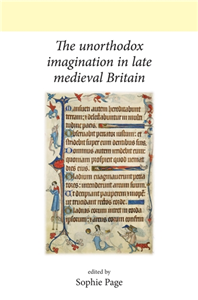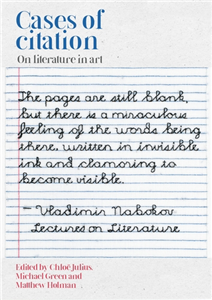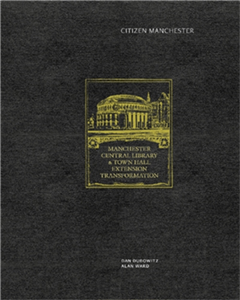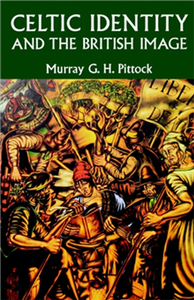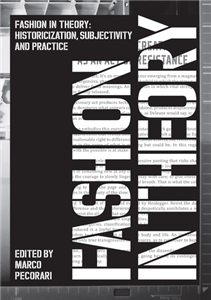Your Search Results
-
Promoted Content
-
Promoted Content
-
 Trusted Partner
Trusted Partner
-
 Trusted Partner
Central government policiesDecember 2009
Trusted Partner
Central government policiesDecember 2009Candide en Dannemarc, ou l’optimisme des honnêtes gens
Voltaire
by Mike Thompson, Edouard Langille
Published in Rouen in 1767 and reprinted two years later, Voltaire's Candide en Dannemarc, ou l'optimisme des honnêtes gens wraps up the adventures of Candide. Turning his back on both Voltairean satire and scepticism, the novelist proposes a moralistic fable - the focal point of which is a rehabilitation of Leibniz's Theory of Optimism. The main body of the novel tells the story of Candide and his new wife, the noble Zénoïde, in their sumptuous Copenhagen townhouse. Before achieving this happy state, however, the couple endures various trials and tribulations reminiscent of the newly minted gothic genre. Candide en Dannemarc also features a satirical portrait of Jean-Jacques Rousseau. ;
-
 Trusted Partner
Literature & Literary StudiesJune 2017
Trusted Partner
Literature & Literary StudiesJune 2017Candide en Dannemarc, ou l’optimisme des honnêtes gens
Voltaire
by Edouard Langille
Published in Rouen in 1767 and reprinted two years later, Voltaire's Candide en Dannemarc, ou l'optimisme des honnêtes gens wraps up the adventures of Candide. Turning his back on both Voltairean satire and scepticism, the novelist proposes a moralistic fable - the focal point of which is a rehabilitation of Leibniz's Theory of Optimism. The main body of the novel tells the story of Candide and his new wife, the noble Zénoïde, in their sumptuous Copenhagen townhouse. Before achieving this happy state, however, the couple endures various trials and tribulations reminiscent of the newly minted gothic genre. Candide en Dannemarc also features a satirical portrait of Jean-Jacques Rousseau.
-
 Trusted Partner
January 2023
Trusted Partner
January 2023Diagnosis Digital Disaster
Can the healthcare system still be saved?
by Peter Schaar
— Ways out of the digital disaster — For healthcare professionals and informed patients Modern information technologies can and should contribute to improving the quality and transparency of medical care and making healthcare more economical – and all for the benefit and well-being of patients. Well, that would be the noble approach. All the talk about health insurance cards, telematics infrastructure and electronic patient files stirs up emotions. Peter Schaar, long-standing Federal Data Protection Commissioner, brings light to the dark data and health thicket. Why are innovations in the healthcare sector met with great scepticism by many stakeholders? How can we speed up the development and implementation of meaningful ITsupported solutions? What role does the narrow, small-scale regulatory framework play – not only, but also in data protection?
-
 Trusted Partner
May 2020
Trusted Partner
May 2020Metalmorphoses
The Fantastic Mutations of Heavy Metal
by Jörg Scheller
How did heavy metal get started? What’s behind the fascination of many bands with the occult? Which women liven up the scene? What is the Heavy Metal Knitting World Championship in Finland about? Jörg Scheller invites you to find out more about the mainstream trends as well as less well-known bizarre facts. Heavy metal began in the 1970s in the subculture of British industrial centres and until today it is an unruly and agile art form. Wellknown warhorses like Iron Maiden or Metallica still pack stadiums, while new trends come from the strong Scandinavian scene. Scheller credits the genre with “exciting synchronism of freedom and order, rebellion and retreat, scepticism and enthusiasm, toughness and diversity”.
-
 Trusted Partner
Humanities & Social SciencesJanuary 2011
Trusted Partner
Humanities & Social SciencesJanuary 2011The Unorthodox Imagination in Late Medieval Britain
by Sophie Page, Julian Hoppit
The unorthodox imagination in late medieval Britain explores how medieval people responded to images, stories, beliefs and practices which were at odds with the normative world view, from the heretical and subversive to the marvellous and exotic. The chapter by Jean-Claude Schmitt examines why some unorthodox images were viewed as provocative and threatening and explores how successfully ecclesiastical authorities contained their impact. The power of unorthodoxy to provoke wonder, scepticism or disapproval provides an opportunity to view medieval culture from fresh perspectives. The essays in this volume show that unorthodoxy was embedded in mainstream medieval culture, from stories of fairies and witches which promoted orthodox moral values to the social conformity of practitioners of ritual magic. This book provides a guide to understanding medieval unorthodoxy and the roles played by experience and imagination in medieval encounters with the unorthodox. It will be essential reading for anyone interested in the exotic, provocative and deviant in medieval culture. ;
-
 Trusted Partner
The ArtsJuly 2010
Trusted Partner
The ArtsJuly 2010Richard Lester
by Neil Sinyard, Brian McFarlane, Neil Sinyard
Richard Lester is of the most significant yet misunderstood directors of the post-war era. Indelibly associated with the Beatles and the 'swinging Sixties' because of his direction of A Hard Day's Night and Help and his joyous sex comedy The Knack, Lester has tended to be categorised as a modish director whose heyday passed when that decade's optimism slid into disillusionment and violence. This book offers a critical appreciation and reappraisal of his work, arguing that it had much greater depth and variety than he has been given credit for. His versatility encompasses the Brechtian anti-heroics of How I Won the War; the surreal nuclear comedy of The Bed-Sitting Room and the swashbuckling adventure of The Musketeers films. He has even, in his instinctively iconoclastic manner, cut Superman down to size. The book should win new admirers for a director with a gift of making movies whose visual wit and imaginative imagery reveal an intelligent and enquiring scepticism about heroes and society. Including comments from Lester himself and illustrations from his own private collection, the book is a must for film scholars and enthusiasts alike. ;
-
 Trusted Partner
Medicine
Trusted Partner
MedicineThe Maieutic Model for Nursing and Treatment
Presentation and Documentation
by Cora van der Kooij
In this successful introductory work, the author describes the principles, rationale, prospects for, and documentation of her maieutic method for nursing and care. The word “maieutics” is derived from the ancient Greek word for “midwife” and draws upon a method developed by Socrates. Through skillful questioning, it reveals the right answers and insights lying dormant in another person’s mind, although he or she was not conscious of them. Cora van der Kooij describes maieutics as midwifery for nursing professionalism. Target Group: Practicing nurses, geriatric nurses, nursing educators
-
 Trusted Partner
September 2021
Trusted Partner
September 2021Crisis and Transformation
by Jean-Pierre Wils (Ed.)
We live in an age of upheaval and crisis; our existence is at the threshold of a new epoch that leaves nothing as it was before. It became clear that the natural materials of our world in transformation were a finite and exhaustible resource. The ambitious projects of humankind were already beset by doubts and the optimism of something better in store for us in the future became ever more subdued. An era of sceptical thinking dawned. What was only recently celebrated as an achievement is today placed in question: democracy, human rights and the bond of solidarity between the generations. But the art of dialogue must always be preserved. The capacity for critical reflection must be repeatedly practised and the sensitivity of our perception deepened.
-
 Trusted Partner
Humanities & Social SciencesJuly 2021
Trusted Partner
Humanities & Social SciencesJuly 2021The fringes of citizenship
Romani minorities in Europe and civic marginalisation
by Julija Sardelic, Gurminder Bhambra
This book presents a socio-legal enquiry into the civic marginalisation of Roma in Europe. Instead of looking only at Roma's position as migrants, an ethnic minority or a socio-economically disadvantage group, it considers them as European citizens, questioning why they are typically used to describe exceptionalities of citizenship in developed liberal democracies rather than as evidence for how problematic the conceptualisation of citizenship is at its core. Developing novel theoretical concepts, such as the fringes of citizenship and the invisible edges of citizenship, the book investigates a variety of topics around citizenship, including migration and free movement, statelessness and school segregation, as well as how marginalised minorities respond to such predicaments. It argues that while Roma are unique as a minority, the treatment that marginalises them is not. This is demonstrated by comparing their position to that of other marginalised minorities around the globe.
-
 Trusted Partner
The ArtsJune 2026
Trusted Partner
The ArtsJune 2026Cases of citation
On literature in art
by Chloë Julius, Michael Green, Matthew Holman
Cases of citation presents a history of artists who incorporated literary references into their work from the 1960s onwards. Through a series of object-focused chapters that each take up a singular 'case of citation', the collection considers how literary citation emerged as a viable and urgent strategy for artists during this period. It surveys nine artworks by a diverse group of artists - including David Wojnarowicz, Lis Rhodes, Romare Bearden and Silvia Kolbowski - whose citations draw on literary works with authors ranging from Gertrude Stein to Jean Genet. The book also features an interview with pioneering feminist artist Elaine Reichek that discusses her career-long commitment to working with text. Together, the artworks and cited texts are approached from various critical angles, with each author questioning and complicating the ways in which we can 'read' textual citations in art.
-
 Trusted Partner
2021
Trusted Partner
2021Self-medication
Guidelines for providing pharmaceutical advice
by Dr. Kirsten Lennecke and Kirsten Hagel
Minor illness or a serious disease ? Through systematic questioning, pharmacists or pharmaceutical technicians can establish the possibilities and limits of self-medication. Each monograph on the over 100 indications for self-medication includes: - A flow chart: basis for the structured consultation - A brief description: additional information about the symptoms - Recommended medications/groups of medications: the treatment options - Additional advice: individual supportive and alternative treatment options - Specific knowledge for advising particular patient groups: e.g. pregnant women, children and senior citizens New for the 7th edition: Monographs that explore the possibilities of supportive self-medication for indications such as hypertension and diabetes. Information about what to do in the case of poisoning, scabies or inflammation of the nail bed (paronychia) is also provided! The details about active substances, products and additional tips have been updated. The pocket guide has long been the standard for providing advice on self-medication – a “must-have”!
-
 Trusted Partner
The ArtsSeptember 2024
Trusted Partner
The ArtsSeptember 2024Cases of citation
On literature in art
by Chloe Julius, Michael Green, Matthew Holman
Cases of citation presents a history of artists who incorporated literary references into their work from the 1960s onwards. Through a series of object-focused chapters that each take up a singular 'case of citation', the collection considers how literary citation emerged as a viable and urgent strategy for artists during this period. It surveys eleven artworks by a diverse group of artists - including David Wojnarowicz, Lis Rhodes, Romare Bearden and Silvia Kolbowski - whose citations draw on works as varied as Karl Marx's Das Kapital and Mary Shelley's Frankenstein. The book also features an interview with pioneering feminist artist Elaine Reichek that discusses her career-long commitment to working with text. Together, the artworks and cited texts are approached from various critical angles, with each author questioning and complicating the ways in which we can 'read' textual citations in art.
-
 Trusted Partner
Photography & photographsMarch 2014
Trusted Partner
Photography & photographsMarch 2014Citizen Manchester
by Dan Dubowitz, Alan Ward
In 2008, Manchester decided to embark on a counter-cyclical project, much as the city fathers had done in the last great recession, and invest significantly in two civic buildings, two buildings that were cornerstones of the making of the first modern industrialised city: Manchester Town Hall Extension and Manchester Central Library. Early on in this major redevelopment project, artists Dan Dubowitz and Alan Ward were given privileged and open access to witness this transformational period in the life of these two iconic buildings. Through large-format photographs and interviews taken and conducted over a period of eighteen months, they captured the moment when the city's citizens and workers had been locked out and the spaces were being stripped bare; revealing both a glimpse of what they had been and what they might become. The artwork provides insights on the reciprocal relationship between people and place, and reveals how the refurbishment of a building can go far beyond physical refurbishment, questioning the relationships between a city, its citizens and place.
-
 Trusted Partner
Humanities & Social Sciences
Trusted Partner
Humanities & Social SciencesA Childhood with ADHD
by Daniela Chirici
“Your child is out of control: they do whatever they want to you!” or “ADHD? There’s no such thing! You’re just not raising your child properly. The problem is you, not the child.” Do these phrases sound familiar to you? Are you questioning whether you are a good mother or father, since your child is not the way society demands and expects? Daniela Chirici is familiar with both the attacks and with the self-doubt. Her oldest son was diagnosed with Attention Deficit Hyperactivity Disorder (ADHD) at an early age. For ten years, until her son reached the age of 19, she regularly wrote for the Swiss ADHD organization. In her texts, she describes how it is to be out and about with a child affected by ADHD and what it means for the whole family. For:• parents, grandparents, and other relatives of childrenaffected by ADHD• teachers• therapists• anyone who wants to find out more about ADHD
-
 Trusted Partner
Humanities & Social SciencesDecember 1999
Trusted Partner
Humanities & Social SciencesDecember 1999Celtic Identity and the British Image
by Murray Pittock
This work explores the idea of the Celt and the definition of the so-called "Celtic Fringe" over the last 300 years. It is an in-depth study of the literary and cultural representation of Ireland, Scotland and Wales over this period, and is based on a wide-ranging grasp of issues of national identity and state formation. The idea of the Celt and Celticism is once again highly fashionable. Is there such a common Celtic heritage? What is the place of the "Celtic Fringe" in British identity? Pittock begins by assessing the term "Celtic" itself, by questioning its validity, going on to examine its historic uses and heroic notions of Scotland's past. The Celtic Revival of the late 19th century is examined in detail together with its impact on Irish nationalism. Pittock asks how far the "Celtic" experience in Britain can be described as a colonial one, and examines the importance of the Celtic languages in preserving a sense of identity. Contemporary issues such as the literary language of the Troubles in Northern Ireland and the growth of modern Scottish nationalism are also considered. ;
-
 Trusted Partner
The ArtsOctober 2025
Trusted Partner
The ArtsOctober 2025Fashion in theory
Historicization, subjectivity and practice
by Marco Pecorari
For Spring Summer 2020, Gucci showed a collection questioning identity politics and capitalism. Rather than the usual explanation of the material, shapes or inspirations behind the collection, the press release handed out at the show quoted the philosopher Michel Foucault and questioned the very nature of fashion itself. Gucci's press release reflects the popularization of critical theory in public discourse and fashion in particular. Philosophers, activists and academics are increasingly recruited to collaborate with luxury brands, and main-stream fashion brands have begun to adopt a discourse about politics and critical thinking using, in their communication, concepts such as "resistance", "gender fluidity", "national identity" or "cultural heritage" without accompanying these discourses with any form of political engagement or activism. Based on this intellectualization of the fashion industry and the recent proliferation of critical theory in fashion education, this book stresses the importance of rethinking the relationship between fashion and theory. Drawing together eleven chapters and four conversations by and with philosophers, cultural theorists, historians, anthropologists, activists, performers and designers, the book investigates both the theorization of fashion and the ways in which fashion offers a useful landscape in understanding the current state of critical theory today.
-
 Trusted Partner
Literature & Literary StudiesAugust 2003
Trusted Partner
Literature & Literary StudiesAugust 2003'Other' Spanish theatres
Erasure and inscription on the twentieth-century Spanish stage
by Maria M. Delgado
'Other' Spanish theatres challenges established opinions on modern Iberian theatre by considering the roles of contrasting figures and companies who have impacted upon both the practice and the perception of Spanish and European stages. In questioning the primacy of the dramatist, this pioneering study offers a new interpretation of a nation's theatrical culture that has been viewed primarily through the prisms of a select number of playwrights. Accordingly many of the conclusions reached are new ones, and the case, for acknowledging the wide influence of Spanish practitioners on theatre in Europe and the Americas is made in persuasive terms. Through a bold documentation and interrogation of key productions and their reception both at home and abroad, 'Other' Spanish theatres focuses on the doing of performance, asking provocative questions around how performances are tested against the texts that remain. In a broad and detailed study Delgado selects six case studies which map out alternative readings of a nation's theatrical innovation through the twentieth century: muse and mentor to Federico Garcia Lorca, Margarita Xirgu; theatrical innovator and influence on Orson Welles, Enrique Rambal; tragedienne Maria Casares feted by George Craig Camus, Genet and Cocteau; actress, producer and director Nuria Espert; international director Lluis Pasqual and Catalan performance company La Cubana. ;












